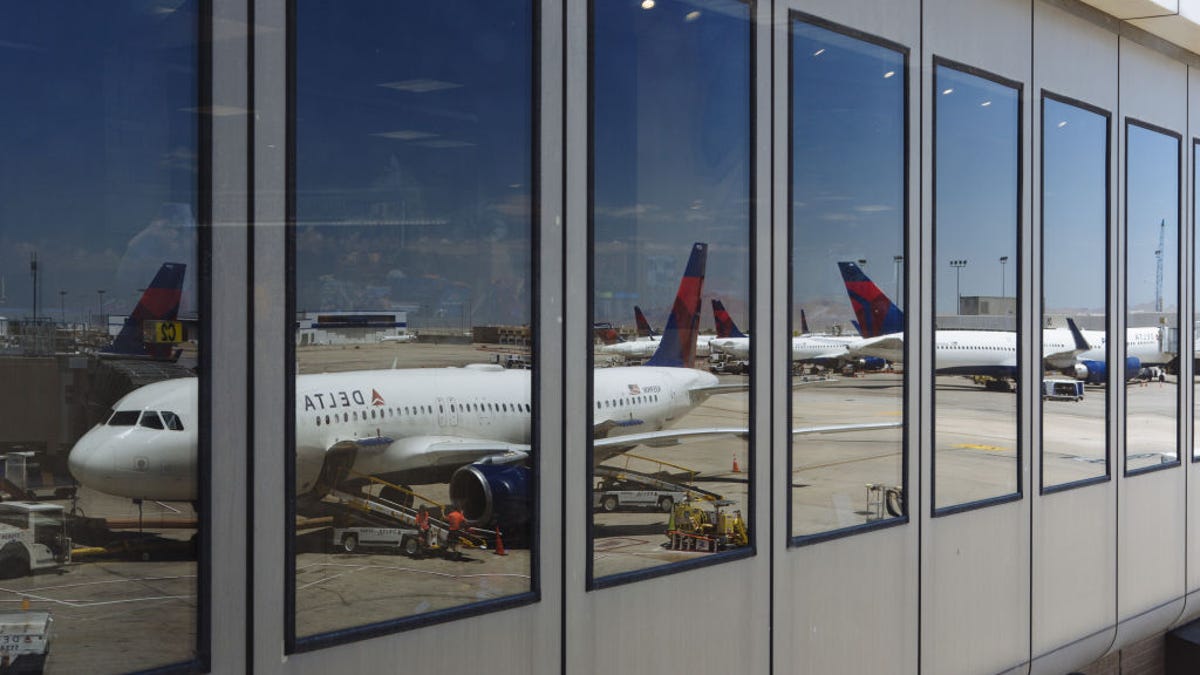- Apple's 'The Illusion of Thinking' is shocking - but here's what it missed
- Multicloud explained: Why it pays to diversify your cloud strategy
- Brits Lose £106m to Romance Fraud in a Year
- Why the Google Pixel Tablet is still my smart home display after a year (and it's on sale)
- Finally, a 16-inch Windows laptop I wouldn't mind putting my MacBook Pro away for
I tried Delta’s new free inflight Wi-Fi. Here’s how fast it was

The new free, better Delta Wi-Fi inflight internet is here sjvn/ZDNET
Wi-Fi on planes has always been slow and often a little klutzy. Now, Delta and T-Mobile have partnered up to offer faster, smoother, and — oh yes — free Wi-Fi to its SkyMiles customers.
As a Delta Platinum Medallion SkyMiles member and journalist, I was one of the first to be able to try this new service. I used it on business flights to and from Seattle as I covered CloudNativeSecurityCon. I found it to be a good deal faster and more reliable than my precious airline Wi-Fi experiences.
Also: See the 8 devices I always take on work trips
Even though I frequently fly for business, I’ve tended to avoid airline Wi-Fi. It’s been too expensive and too slow. I only used it when I absolutely had to use it to turn in a story. Now, for the first time, I can see using it on every trip. And, that’s not just because it’s free. While it’s not even in the same ballpark as my home AT&T Gigabit fiber connection, it’s fast enough to be used for work, streaming music, and even streaming SD-quality video.
For 30,000 feet and flying at 500 MPH, Delta’s new Wi-Fi is fast and reliable. sjvn/ZDNET
Specifically, I saw average download speeds of about 7 Megabits per second (Mbps) with upload rates of 1.3 Mbps. With ping rates of 600 to 1,000 milliseconds, however, it’s absolutely unusable for videoconferencing with Zoom and the like, and only a glutton for punishment would use it for gaming.
Also: 5 best internet speed tests
On the other hand, I could use Software-as-a-Service office programs, such as Google Docs and Microsoft 365, with no trouble whatsoever. Indeed I wrote this story at 30,000 feet, just as if I were sitting in the lobby of a tradeshow hotel.
The most important difference in this new service is that it’s stable and reliable. On all too many of my previous flights, I spend more time connecting and reconnecting with unstable connections. On both of my 2,100-odd-mile flights, my connection was rock solid.
Today this Wi-Fi service is available on more than 500 Delta aircraft. By year’s end, Delta will be offering it on all of its more than 700 Viasat satellite-capable aircraft. Delta has announced plans to bring free Wi-Fi to all of its international and regional aircraft by the end of 2024.
Also: Are you a heavy phone hotspot user? Get this mobile hotspot router instead
Do note that even though Delta has partnered with T-Mobile, it’s not using T-Mobile’s 5G offerings. That’s another generation of technology away. Instead, it’s sticking with Viasat. That means you won’t be seeing any speed or latency improvements anytime soon.
When your access point is 23,000 miles away in geosynchronous orbit, there’s no getting around the law of physics. StarLink gets around this by using constellations of much closer Low Earth Orbit (LEO) satellites. At this time, no airline is using StarLink for its inflight internet connectivity.
While I’d love to see 80-100 Mbps speeds on my next flight, honestly, I’m pleased as punch that I finally have an airline internet connection that I can rely on.

